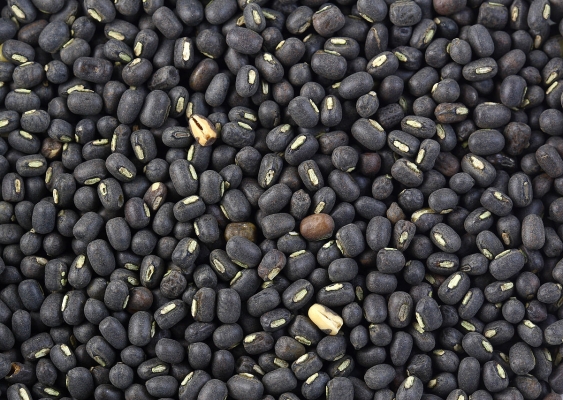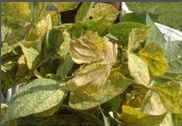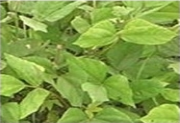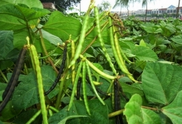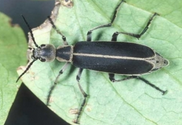Him mash-1 (U.P.U-0031): It is suitable for sowing in sub-mountainous and low mountainous tropical areas. It has brown to black color grains which gives more yield. The variety gets ready in 74-76 days. The variety is resistant to yellow mosaic, leaf curl, anthracnose and powdery mildew and is moderately tolerant to cercospora spot. It gives an average yield of 5-6qtl/acre.
U.G.-218: It is an early maturing variety which gets ready in 81 days. It is suitable for sowing in sub-mountainous and low mountainous tropical areas. Sowing of this variety is done in first fortnight of March. The plant attains the height of 30-40cm. The variety gives an average yield of 5qtl/acre.
Pant U-19: The variety gets ready in 85 days. The variety is resistant to yellow mosaic but is moderately resistant to leaf diseases. It gives an average yield of 3-4qtl/acre.
P.D.U-1: It is medium long, long legumes and thick seeds variety. It is suitable for sowing in Kullu hills. It gives an average yield of 4-5qtl/acre.
T-9: It is straight and dwarf variety which has deep green color leaves and yellow color flowers. It has medium long height, which is green at first and becomes black at maturity. It has thick size seeds which contains 23% protein content. The variety gets ready in 95-100 days and it gives an average yield of 3-4qtl/acre.
Palampur-93: The variety is resistant to Cercospora leaf spot and powdery mildew. It is suitable for Kullu and Kangra regions. It is a medium height plant. The variety gets ready in 85-90 days. It has big grains, deep black in color and hard in nature. The seeds contain 26.2% protein content.
Other state varieties:
TPU-4: Suitable for cultivation in Central part of Rajasthan. Released by BARC/MAU in 1992. The plant is erect, medium tall height and bold seeds which are dull black in color. It gives an average yield of 3qtl/acre. The variety gets mature in 75 days.
WBU-108: Released by BCKV in 1996. It is a kharif season crop. It gives an average yield of 5qtl/acre. The variety gets mature in 85 days. The variety is resistant to YMV (Yellow Mosaic Virus).
Barkha (RBU 38): Released by RAU, Bansawara in 1999. It has bold seeds and the variety is resistant to Cercospora leaf spot. It gives an average yield of 5qtl/acre. The variety gets mature in 75 days.
IPU 94-1: Released by IIPR in 1999. The variety is resistant to YMV and it is a kharif season crop. It gives an average yield of 4.5-5qtl/acre. The variety gets mature in 85 days.
Shekhar 2 (KU 300): Released by CSAUAT in 2001. It gives an average yield of 4.5-5 qtl/acre. The variety gets mature in 70 days.
Pant Urd 31: It is a short duration variety which is released in 2008. It gives an average yield of 6qtl/acre. The variety gets mature in 75-80 days.
Pant Urd 40: It is a short duration variety which is released in 2008. It gives an average yield of 5-6qtl/acre. The variety gets mature in 70-75 days.
Vishwas (NUL-7): Released in 2012. It gives an average yield of 4qtl/acre. The variety gets mature in 69-73 days.
AL-15: It is a short duration variety, matures in 135days. Pods are borne in clusters. It gives average yield of 5.5qtl/acre.
AL 201: It is early maturity variety. It matures in about 140 days. Main stem is stronger than side branches. Each pod contains 3-5 yellowish brown and medium size seeds. It gives average yield of 6.2qtl/acre.
PAU 881: It is early maturing variety. It matures in 132 days. Plants are 2m tall. Each pod contains about 3-5 yellow brown and medium size seeds. It gives average yield of 5.6qtl/acre.
UPAS-120: It is extra early maturing (120-125 days) variety. These are medium tall and semi spreading varieties. Seeds are small and light brown color. The average yield is 6-7 quintals per hectare. It is susceptible to sterility mosaic disease.
ICPL 151 (Jagriti): Ready to harvest in 120-130 days. It gives average yield of 4 to 5qtl/acre.
PusaAgeti: Dwarf bold seeded variety, ready to harvest in 150 to 160 days. It gives average yield of 5qtl/acre.
Pusa 84: Medium tall, semi spreading variety, ready to harvest in 140 to 150days.
IPA 203 and IPH 09-5 (Hybrid)

